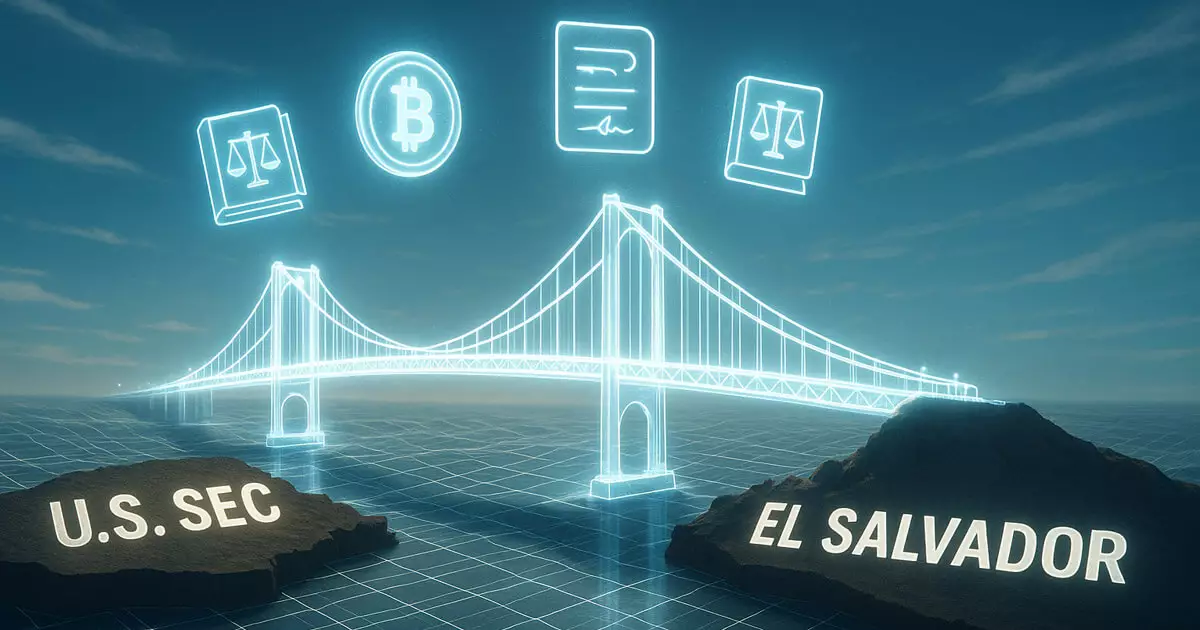The landscape of digital asset regulation is shifting dramatically as the U.S. Securities and Exchange Commission (SEC) embarks on an ambitious exploration of cross-border regulatory frameworks. Their recent dialogue with El Salvador’s National Commission of Digital Assets (CNAD) suggests a necessary departure from outdated regulations that stifle innovation. In an era where digital assets are poised to reshape financial systems, the SEC’s foray into creating a regulatory sandbox is both a strategic and vital move. However, it raises critical questions about the future of regulatory efficacy and investor protection.
A Regulatory Sandbox: A Double-Edged Sword
The idea of introducing a regulatory sandbox to experiment with tokenization is indeed both innovative and promising. This controlled environment allows for real-world testing of various tokenization models—an approach that the SEC believes can enhance their regulatory framework. Yet, while this initiative has the potential to yield valuable insights on scaling the market, it also runs the risk of creating loopholes and unintended consequences. The low initial cost of participation might attract a flood of small players into the field, but will the SEC be equipped to manage this anticipated increase in complexity?
Transparency and rigor will be paramount if we are to avoid repeating past mistakes seen in the financial sector. Regulatory oversights helped trigger the 2008 financial crisis; we must not allow history to repeat itself in the digital age. It is crucial that the SEC not only learns from other nations’ regulatory practices but also critically evaluates their approach to ensure investor confidence and market integrity are upheld.
Collaboration with a Purpose
The SEC’s partnership with CNAD showcases a collaborative spirit that is essential for successful international regulatory practices. The two pilot programs proposed—one focusing on real estate tokenization and the other on token-based fundraising—represent a significant shift towards practical, hands-on analysis. However, these initiatives provide a smokescreen for deeper issues. Collaboration must happen at multiple levels—not just between regulators and companies, but also with the voices of investors and independent experts. Otherwise, the push for a compliant digital future may falter, leaving behind an uneven playing field.
The SEC must advocate for a global conversation on digital assets, one that prioritizes adaptability over rigid frameworks. As the agency utilizes this sandbox, the insights gained shouldn’t just serve U.S. interests but should actively contribute to a worldwide dialogue on best practices.
Changing Attitudes in the Face of Innovation
The SEC’s evolving stance since the Trump administration indicates a shift towards a more progressive view of crypto regulation. Dropping antiquated enforcement actions is a welcome change, but is it enough? The reality is that while the SEC has begun to acknowledge the growing importance of digital assets, it must also confront the stark truth that it remains behind the curve in a rapidly advancing market.
Innovation must drive policy, not the other way around. The SEC can no longer afford to apply antiquated frameworks to burgeoning technologies. This newfound enthusiasm for crypto could be a game-changer if reinforced with robust policies that ensure responsible growth while protecting investors.
As the SEC continues to navigate this new frontier, the need for courageous decision-making will be paramount. A myopic focus on compliance could generate inertia, which would ultimately dislocate the agency from the very innovation it seeks to regulate. It’s time for the SEC to take bold actions—actions that not only embrace technological advancements but also safeguard the future of digital finance.

